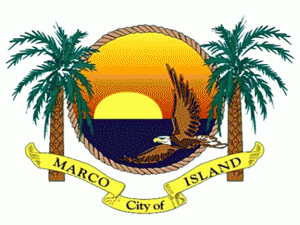Marco Island Benefits From Reduced Configuration By Switching to VTScada
 Located in Collier County, Marco Island is the largest of Florida’s ten thousand islands on the Gulf of Mexico in Southwest Florida. In December 2014, the City of Marco Island decided to replace their existing SCADA software system. The outdated application was housed on servers running Windows XP, now an un-supported Microsoft platform. After a review, the City chose VTScada based on its technical advantages and its ability to convert existing SCADA applications.
Located in Collier County, Marco Island is the largest of Florida’s ten thousand islands on the Gulf of Mexico in Southwest Florida. In December 2014, the City of Marco Island decided to replace their existing SCADA software system. The outdated application was housed on servers running Windows XP, now an un-supported Microsoft platform. After a review, the City chose VTScada based on its technical advantages and its ability to convert existing SCADA applications.
The Existing System
The application currently includes multiple Wonderware applications at four plants running on dozens of workstations, panel PCs, and industrial touchscreens. The system also remotely monitors and controls 86 sewage lift stations, 13 Reverse Osmosis (RO) supply wells, seven Aquifer Storage Recovery (ASR) wells, and two golf course reuse sites.
Spanning four project phases, each of the Wonderware applications will be integrated into a single VTScada system encompassing all facilities with multiple layers of redundancy. In each phase, the existing tag database and (historical records) will be converted while providing Marco Island utilities personnel with new custom graphic interfaces.
Phase 1 – Lift Station Network
Phase 2 – North Water Treatment Plant (NWTP) including ASR wells
Phase 3 – Surface Water Treatment Plant (SWTP)
Phase 4 – Reclaimed Water Production Facility (RWPF), Shores Wastewater Treatment Plant (WWTP), and golf course reuse sites
Ease-of-Use Features
VTScada’s ability to integrate many applications into one overall system provides cost savings to users in the form of reduced computer hardware and software components. This is accomplished by VTScada’s unique integration of all elements within a single software installation, made possible by an event-driven core for speed of execution. As a result, the complexities of multiple product installations and interaction with elements such as Historians, I/O servers, thin clients, development, and view nodes are replaced with one easy to use point of configuration and operation. This simplified eloquent architecture also avoids the limited and complex communications required between separate products and/or servers, which in turn limit single server capabilities resulting in more hardware/software, higher costs and complexity.
In addition, VTScada includes a variety of unique features to help simplify the conversion and benefit end users.
- Each of the 86 lift station sites has 26 I/O tags with almost identical configuration, such as addressing, scaling, units, etc. These will be modeled via rapidly created VTScada tag types to reduce development time and help eliminate errors (similar to RO trains, etc).
- Site information and control will be accessed via a newly developed parameterized site page, meaning the site details page layout will be identical for all sites.
- The standard VTScada site mapping tools will provide users with an intuitive overview of all sites in an insightful Slippy Maps format.
As redundancy configuration is effortless within VTScada, the workstations will be redundant, so if one fails, another will continue to provide all data collection, historical trending, control, thin client connections, and alarming. When the failed server is restored, it will automatically synchronize historical and configuration data with the rest of the system.
When issues occur, VTScada’s Alarm Notification System will contact appropriate personnel by phone, email, pager, or text message until the alarm is corrected. Unlike the current third-party WIN-911 system, this built-in utility will remain seamlessly integrated over the life of the new system.
Realm Area Filtering will allow operators at the lift station to only see lift station alarms while operators at the RO Plant will only see alarms for the RO plant.
In addition to standard thick client workstations, operators can monitor and control the process using VTScada thin clients at any networked computer or mobile device without prior installation.
The utility expects the system to be up and running by late 2015.
For more inforamtion about Marco Island SCADA, contact Bryan Sinkler, 1.407.888.8203.
